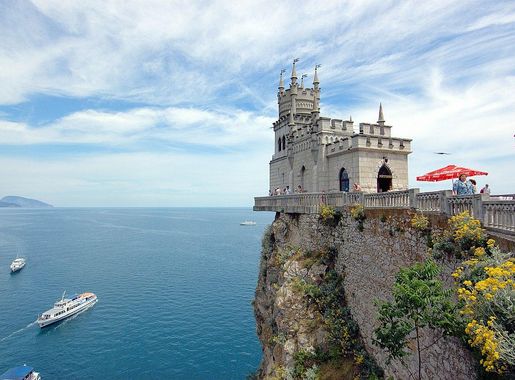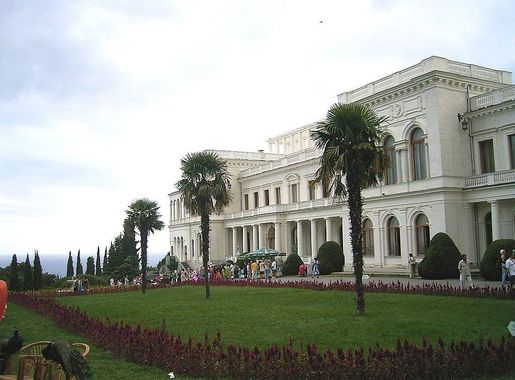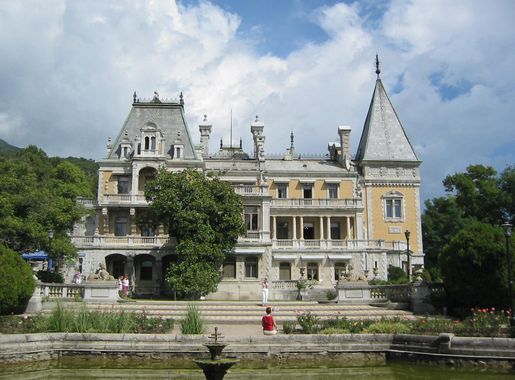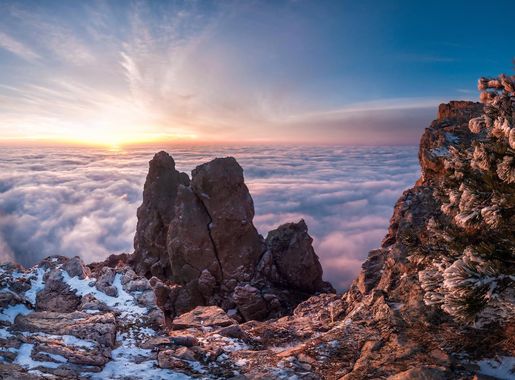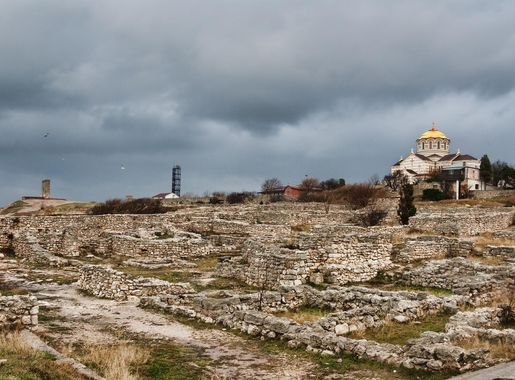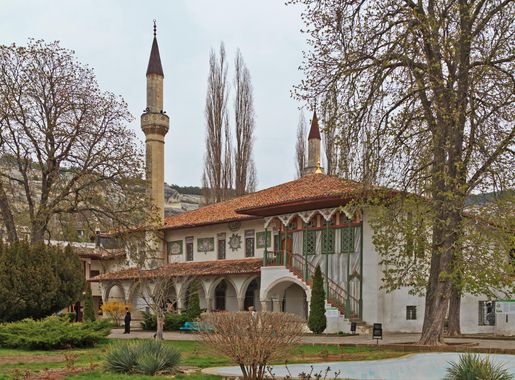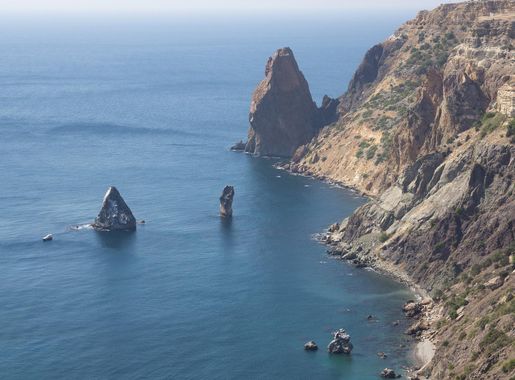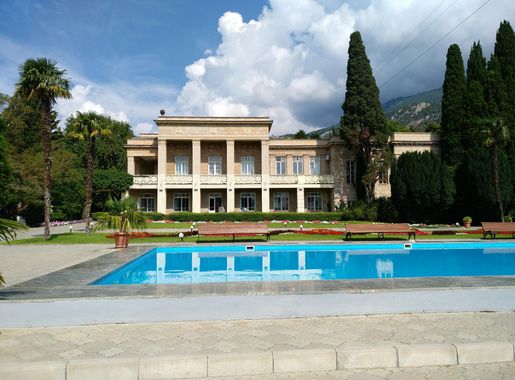
The Enchanting Crimean Peninsula: A Mosaic of History and Nature
Discover the Crimean Peninsula: A stunning blend of history, culture, and natural beauty on Ukraine's Black Sea coast.
Nestled on the northern coast of the Black Sea, the Crimean Peninsula is a jewel in Ukraine's crown. This region boasts a rich tapestry of history, culture, and natural beauty, making it a must-visit destination for tourists. From the stunning landscapes of the Crimean Mountains to the sparkling beaches along its coastline, there is something here for everyone. The cities of Crimea, such as Sevastopol and Yalta, are steeped in history. Sevastopol is famous for its naval base and maritime museum, while Yalta is known for its role in the 1945 Yalta Conference and its beautiful seaside promenade. Don't miss the chance to explore the ancient city of Chersonesus, a UNESCO World Heritage site, which offers a glimpse into the region's Greek and Byzantine past. Nature enthusiasts will find paradise in the Crimean Peninsula. The Ai-Petri Mountain offers breathtaking views and is accessible by a scenic cable car ride. The Nikitsky Botanical Garden, one of the oldest botanical gardens in the world, showcases a vast array of plant species. For those who love the sea, the Black Sea's crystal-clear waters are perfect for swimming, snorkeling, and diving. The Crimean Peninsula is also a hub for cultural experiences. Traditional Tatar villages provide insight into the local way of life, and you can savor delicious Crimean Tatar cuisine, which features dishes like chebureki and plov. The region's diverse cultural influences are also reflected in its architecture, with beautiful mosques, churches, and palaces dotting the landscape.
Local tips in Crimean Peninsula
- Visit in late spring or early autumn to enjoy pleasant weather and avoid the summer crowds.
- Carry cash, as many small shops and restaurants may not accept credit cards.
- Learn a few basic phrases in Ukrainian or Russian to help with communication.
- Take a guided tour to fully appreciate the historical significance of sites like Chersonesus and the Livadia Palace.
- Try local Crimean Tatar dishes at traditional restaurants for an authentic culinary experience.
- Be mindful of current travel advisories and political situations when planning your trip.
The Enchanting Crimean Peninsula: A Mosaic of History and Nature
Nestled on the northern coast of the Black Sea, the Crimean Peninsula is a jewel in Ukraine's crown. This region boasts a rich tapestry of history, culture, and natural beauty, making it a must-visit destination for tourists. From the stunning landscapes of the Crimean Mountains to the sparkling beaches along its coastline, there is something here for everyone. The cities of Crimea, such as Sevastopol and Yalta, are steeped in history. Sevastopol is famous for its naval base and maritime museum, while Yalta is known for its role in the 1945 Yalta Conference and its beautiful seaside promenade. Don't miss the chance to explore the ancient city of Chersonesus, a UNESCO World Heritage site, which offers a glimpse into the region's Greek and Byzantine past. Nature enthusiasts will find paradise in the Crimean Peninsula. The Ai-Petri Mountain offers breathtaking views and is accessible by a scenic cable car ride. The Nikitsky Botanical Garden, one of the oldest botanical gardens in the world, showcases a vast array of plant species. For those who love the sea, the Black Sea's crystal-clear waters are perfect for swimming, snorkeling, and diving. The Crimean Peninsula is also a hub for cultural experiences. Traditional Tatar villages provide insight into the local way of life, and you can savor delicious Crimean Tatar cuisine, which features dishes like chebureki and plov. The region's diverse cultural influences are also reflected in its architecture, with beautiful mosques, churches, and palaces dotting the landscape.
When is the best time to go to Crimean Peninsula?
Iconic landmarks you can’t miss
Yalta, Naberezhnaya
Explore the stunning Yalta Naberezhnaya, a vibrant promenade offering breathtaking Black Sea views, local cuisine, and a lively atmosphere for every traveler.
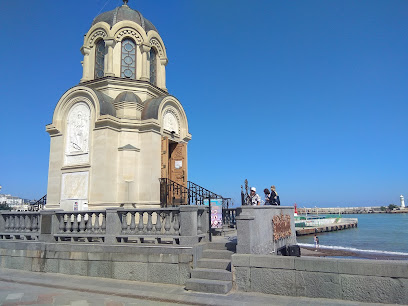
Monument to the Sunken Ships in Sevastopol
Explore the Monument to the Sunken Ships in Sevastopol, a historical landmark that honors maritime courage and offers breathtaking views of the Black Sea.

Vorontsov Palace
Explore the breathtaking Vorontsov Palace, a fusion of Gothic and Moorish architecture set against the stunning backdrop of the Black Sea in Alupka, Crimea.
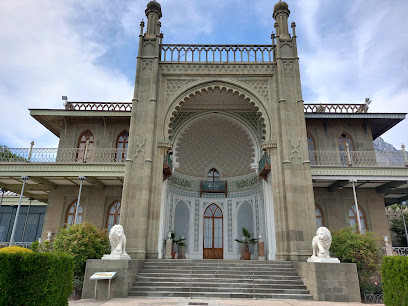
Genoese fortress
Explore the Genoese Fortress in Sudak, a stunning medieval landmark offering breathtaking views and rich historical experiences.

Swallow's Nest
Explore the enchanting Swallow's Nest, a stunning castle perched on cliffs overlooking the Black Sea, offering breathtaking views and rich history.
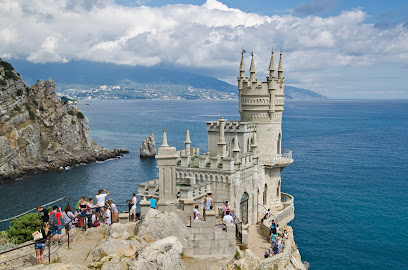
Livadia Palace
Discover the grandeur of Livadia Palace, a historical castle in Crimea, steeped in royal heritage and breathtaking views of the Black Sea.
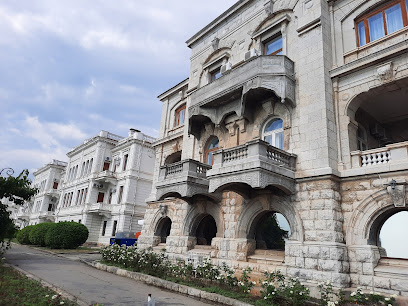
National Preserve of Tauric Chersonesos
Explore the breathtaking ruins of the National Preserve of Tauric Chersonesos, a UNESCO World Heritage site boasting ancient history and stunning coastal views.
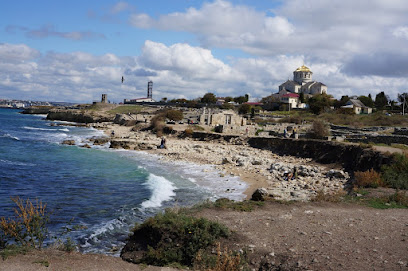
Naberezhnaya G.sudak
Explore the enchanting Naberezhnaya G.sudak, a nature preserve along the Black Sea, where stunning landscapes meet rich biodiversity and serene tranquility.
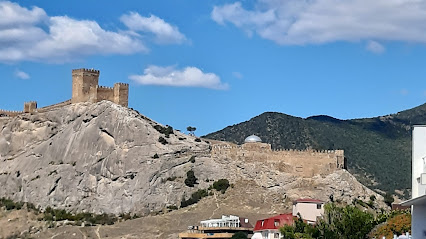
Park Imeni Yuriya Alekseyevicha Gagarina
Explore the lush landscapes and serene ambiance of Park Imeni Yuriya Alekseyevicha Gagarina in Simferopol – a perfect getaway for nature lovers.
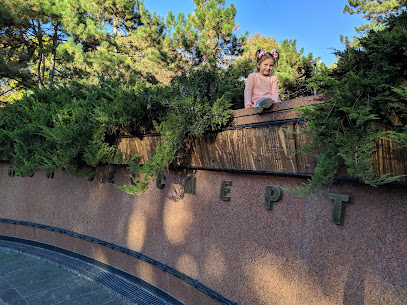
Count's Jetty
Experience the historical allure of Count's Jetty in Sevastopol, where the past meets the stunning scenery of the Black Sea.
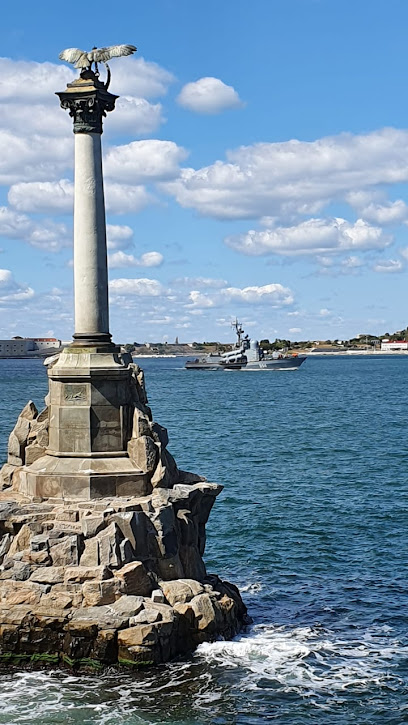
The Khan's Palace
Discover the enchanting Khan's Palace in Bakhchysarai, a beautiful blend of museum and mosque showcasing Crimean Tatar history and culture.
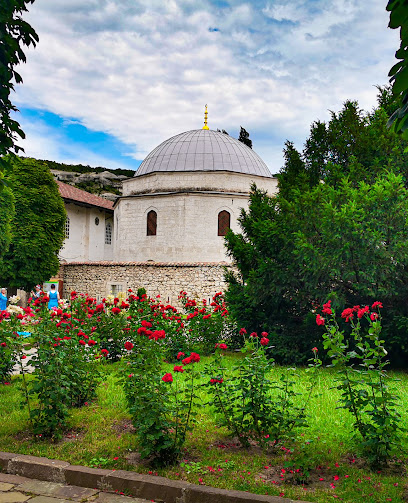
Chufut-Kale
Discover the rich history and stunning landscapes of Chufut-Kale, a remarkable historical landmark in Crimea, perfect for history enthusiasts and nature lovers alike.
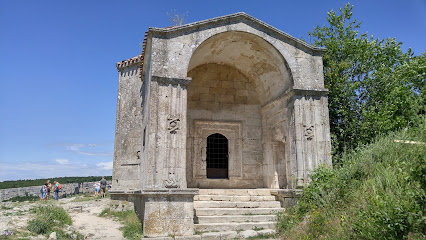
Panticapaeum
Explore the breathtaking ruins of Panticapaeum in Kerch, a key archaeological site of the ancient Bosporan Kingdom, rich in history and culture.
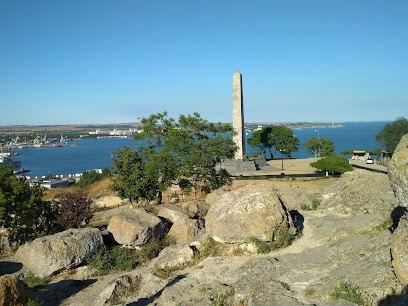
Genuezskaya Krepost' Chembalo
Explore the Genuezskaya Krepost' Chembalo, a historic fortress in Sevastopol, offering stunning views and a deep dive into the region's fascinating past.
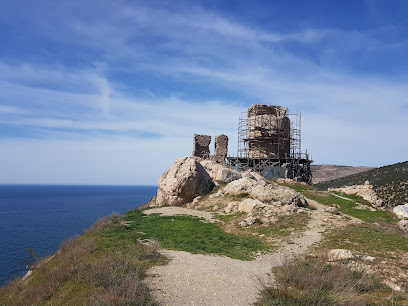
Gora Ay Petri
Explore the breathtaking Gora Ay Petri, a majestic mountain peak in Crimea offering stunning views, thrilling hikes, and rich natural beauty for every adventurer.
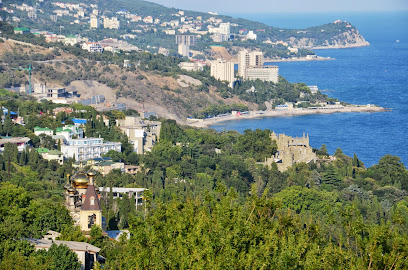
Unmissable attractions to see
Swallow's Nest
Discover the enchanting Swallow's Nest Castle, a stunning architectural marvel perched above the Black Sea, offering breathtaking views and a glimpse into history.
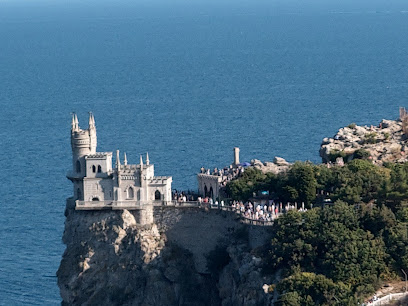
Bowl of love
Discover the enchanting Bowl of Love in Olenivka, a romantic monument celebrating love and unity amidst the stunning landscapes of Crimea.
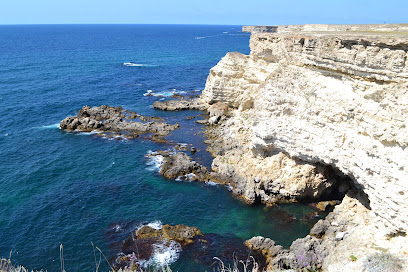
Jur-Jur Falls
Experience the awe-inspiring beauty of Jur-Jur Falls, a natural gem in Crimea, where adventure meets tranquility amidst stunning landscapes.

Karadag Nature Reserve
Explore the breathtaking landscapes and rich biodiversity of Karadag Nature Reserve, a must-visit nature preserve on the Black Sea coast of Crimea.

The Valley Of Ghosts
Explore the mesmerizing Valley of Ghosts, a natural wonder in Crimea with stunning rock formations and breathtaking views that captivate every traveler.
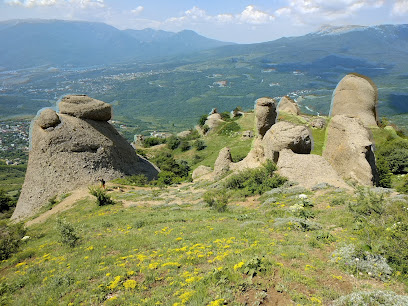
Opukskyi Nature Preserve
Explore the breathtaking beauty of Opukskyi Nature Preserve, a nature lover's paradise along the Black Sea coastline, rich in biodiversity and stunning landscapes.
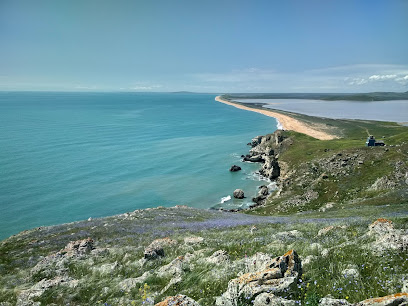
Krymskiy Prirodnyy Zapovednik
Explore the breathtaking landscapes and rich biodiversity of Krymskiy Prirodnyy Zapovednik, a must-visit nature reserve in Alushta, Russia.
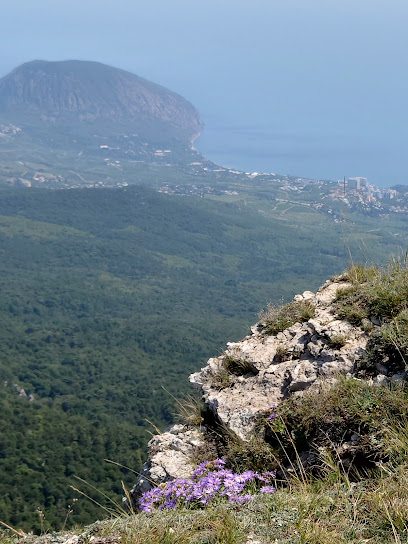
Charming Harbor National Park
Explore the natural beauty and tranquility of Charming Harbor National Park, a premier destination for nature lovers and adventure seekers alike.
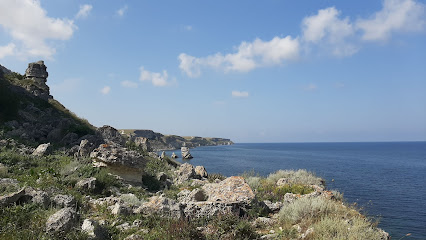
Kosa Tuzla
Explore the breathtaking beauty of Kosa Tuzla in Taman, Krasnodar Krai, Russia, a tranquil destination perfect for nature lovers and adventure seekers.
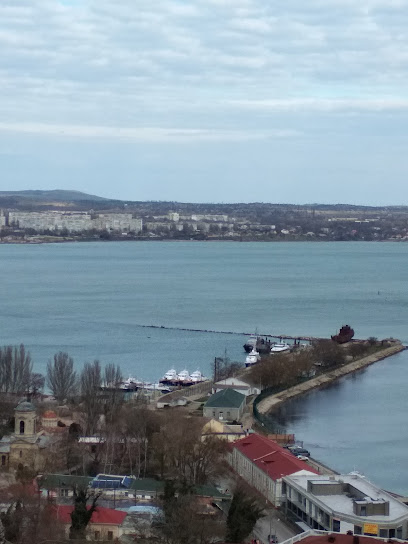
Skala Ifigeniya
Experience the serene beauty of Skala Ifigeniya, a must-visit tourist attraction near Castrópolis, where nature and culture come alive.

Ak-Monayskiye Kamenolomni
Experience the breathtaking beauty of Ak-Monayskiye Kamenolomni, a stunning natural wonder in Russia, perfect for adventure seekers and nature lovers.
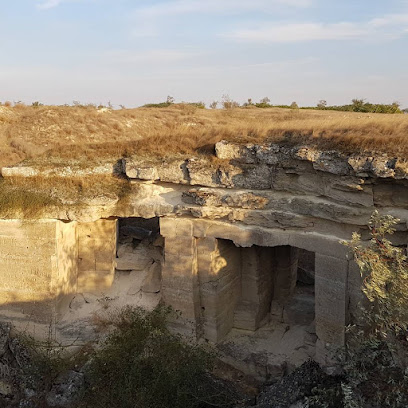
Essential places to dine
Ресторан Облака
Discover the exquisite blend of local and international flavors at Ресторан Облака in Odesa – an unforgettable culinary journey awaits!
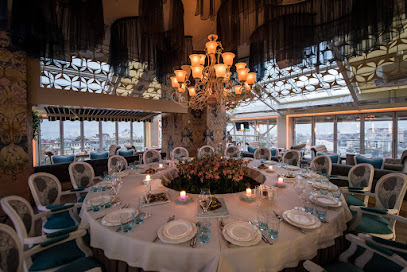
Krym
Experience Odesa's culinary delights at Krym Restaurant, where every dish tells a story rich in flavor and tradition.

Gostinichnyy Kompleks Vodoley
Experience exceptional dining at Gostinichnyy Kompleks Vodoley in Alushta - where local flavors meet stunning sea views.
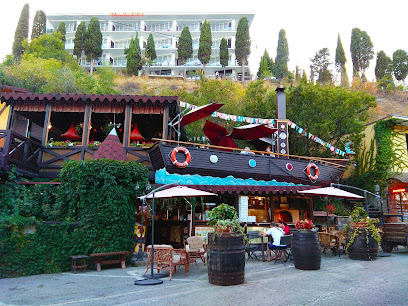
Knyazha Vtikha
Experience the exquisite flavors of local cuisine at Knyazha Vtikha in Simferopol, where culinary artistry meets warm hospitality.
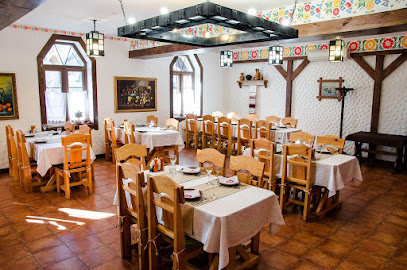
Traktir Kuptsa Saribana
Experience authentic Crimean cuisine at Traktir Kuptsa Saribana, where tradition meets flavor in a charming setting.
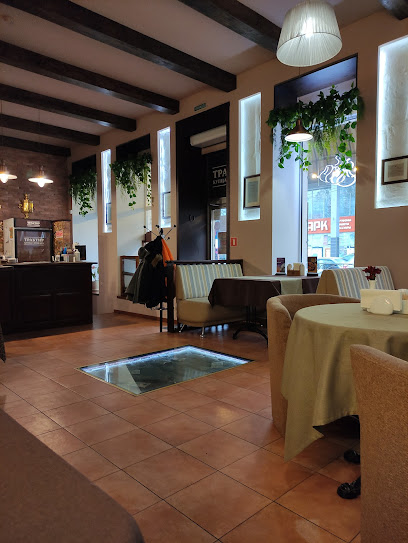
Staryy Gorod, Restoran
Experience authentic Russian cuisine at Staryy Gorod in Alushta - where tradition meets flavor in every dish.
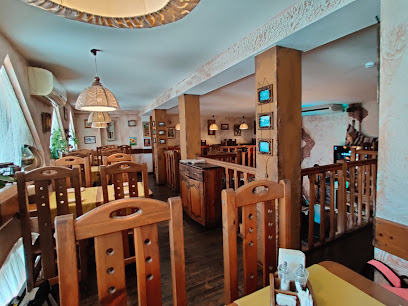
Restoran Mekenzi 1783
Discover exquisite dining at Restoran Mekenzi 1783 in Sevastopol—where culinary artistry meets stunning seaside views.
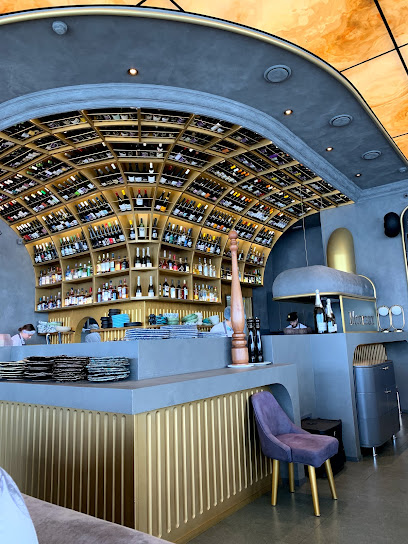
Krym Ukrainskiy
Savor authentic Ukrainian cuisine at Krym Ukrainskiy in Simferopol - where tradition meets taste.

Restaurant Moscow
Experience authentic Russian and modern European cuisine at Restaurant Moscow in Simferopol - a culinary gem that delights every palate.
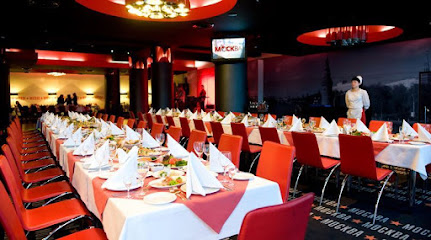
Ресторан «Украина»
Savor authentic Ukrainian cuisine at Ресторан «Украина», where every dish is a celebration of tradition and flavor in Simferopol.
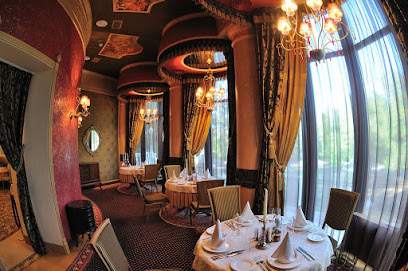
Ustrichnaya Ferma Krymskiye Moreprodukty
Discover exquisite Black Sea seafood at Ustrichnaya Ferma Krymskiye Moreprodukty in Novoozyornoye - where tradition meets taste.
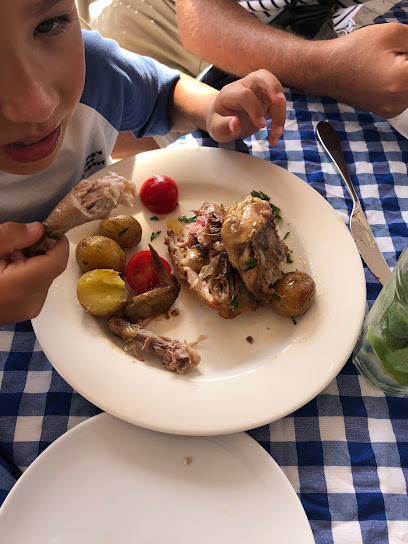
Markets, malls and hidden boutiques
Panticapaeum
Discover the ancient ruins of Panticapaeum in Kerch, a historical site that showcases the rich legacy of the Greek civilization in the Black Sea region.
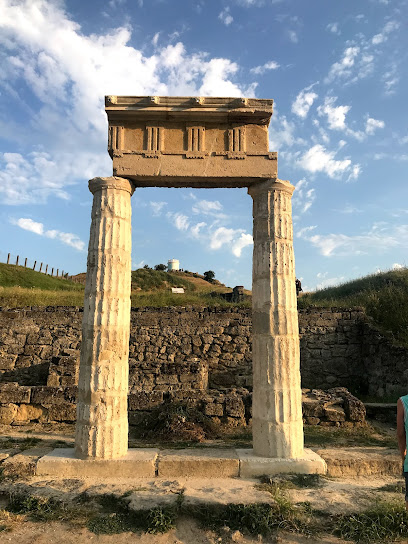
South Gallery
Experience the lively atmosphere of South Gallery, Simferopol's premier shopping mall with diverse shops, dining, and entertainment options.
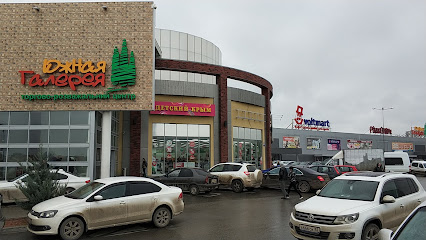
Krymskiy Prirodnyy Zapovednik
Explore the stunning Krymskiy Prirodnyy Zapovednik, a breathtaking natural reserve rich in wildlife and scenic beauty, perfect for adventure and relaxation.
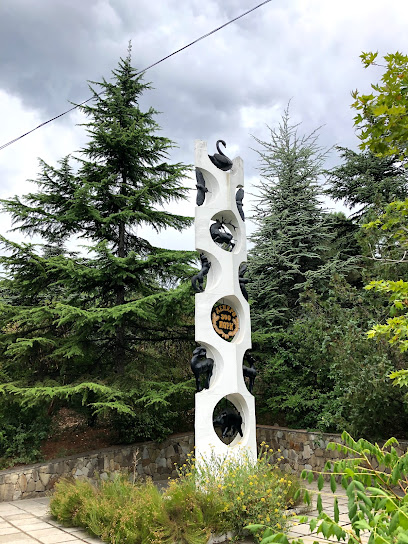
Essential bars & hidden hideouts
Tartuga Bar
Experience the heart of Simferopol's nightlife at Tartuga Bar, where lively music and expertly crafted drinks await you.
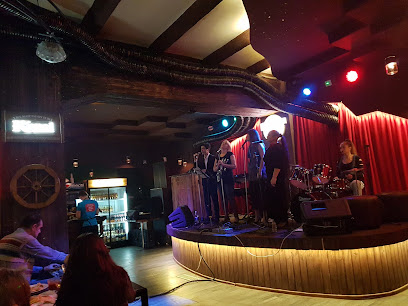
Бар
Experience revitalization with unique oxygen cocktails at the Oxygen Cocktail Bar, a must-visit wellness destination for tourists.
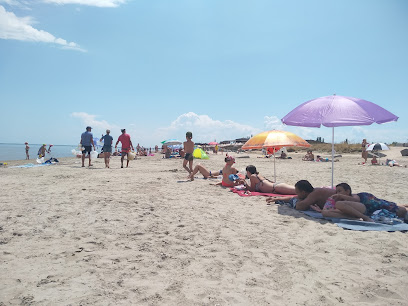
Украинский Крым
Experience the breathtaking beauty and rich culture of Ukrainian Crimea, a paradise on the Black Sea with endless adventures and historical treasures.

Ukrainskiy Krym
Explore the vibrant nightlife of Simferopol at Ukrainskiy Krym, a bar offering local flavors and a welcoming atmosphere for all.

Crimean Peninsula
Experience the breathtaking beauty and rich cultural heritage of the Crimean Peninsula, a must-visit destination on the Black Sea.

Local Phrases about Crimean Peninsula
-
- HelloСалом
[Salom] - GoodbyeҚош калын
[Qoş kalın] - YesӘйе
[Äye] - NoЖок
[Jok] - Please/You're welcomeРахмет
[Rahmet] - Thank youРахмат
[Rahmat] - Excuse me/SorryКечиресиз
[Kechiresiz] - How are you?Насылсыз?
[Nasılsız?] - Fine. And you?Жақсы. Сен?
[Jaqsı. Sen?] - Do you speak English?Сіз ағылшынша сөйлейсіз бе?
[Siz ağılşınşa söyleisiz be?] - I don't understandМен түсінбедім
[Men tüsinbedim]
- HelloСалом
-
- I'd like to see the menu, pleaseМенюмен танысқаным келеді
[Menyumen tanısqanım keledi] - I don't eat meatМен говядинаны тамаққа алмаймын
[Men govıydanany tamaqqa almaımın] - Cheers!Сау болуы
[Saw bolwı] - I would like to pay, pleaseСізге төлеу керек
[Sizge töleu kerek]
- I'd like to see the menu, pleaseМенюмен танысқаным келеді
-
- Help!Көмек!
[Kömek!] - Go away!Ауырға барыңыз!
[Awırğa barınız!] - Call the Police!Полицияға қоңырау шалыңыз!
[Politsiyağa qoñıraw şalınız!] - Call a doctor!Докторға қоңырау шалыңыз!
[Doktorğa qoñıraw şalınız!] - I'm lostМен ауырғанмын
[Men awırğanmın] - I'm illМен ауруланып жатамын
[Men awrulanıp zatamın]
- Help!Көмек!
-
- I'd like to buy...Мен ... сатып алу қажет
[Men ... satıp alw qajet] - I'm just lookingМен тек қараушымын
[Men tek qarausımın] - How much is it?Ол канша?
[Ol qanşa?] - That's too expensiveОл тым де арзан
[Ol tım de arzan] - Can you lower the price?Сіз бағаны төмендеуге болады ма?
[Siz bağanı tömendeuge boladı ma?]
- I'd like to buy...Мен ... сатып алу қажет
-
- What time is it?Қанша уақыт?
[Qanşa waqıt?] - It's one o'clockБір уақыт
[Bir waqıt] - Half past (10)Оннан кейін
[Onnan keyin] - MorningТаң
[Tan] - AfternoonКеш
[Keş] - EveningКеш
[Keş] - YesterdayКеше
[Keşe] - TodayБүгін
[Bügin] - TomorrowЕртең
[Erteñ] - 1Бір
[Bir] - 2Екі
[Eki] - 3Үш
[Üş] - 4Төрт
[Tört] - 5Бес
[Bes] - 6Алты
[Altı] - 7Жеті
[Jeti] - 8Сегіз
[Segiz] - 9Тоғыз
[Toğız] - 10Он
[On]
- What time is it?Қанша уақыт?
-
- Where's a/the...?... қайда?
[... qayda?] - What's the address?Мекенжай неге?
[Mekenjay nege?] - Can you show me (on the map)?Мені картаға көрсете аласыз ба?
[Meni kartağa körsete alasız ba?] - When's the next (bus)?Келесі (автобус) не уақытта?
[Kelesi (awtobus) ne waqıtta?] - A ticket (to ....)Билет (....ға)
[Bilet (....ğa)]
- Where's a/the...?... қайда?
History of Crimean Peninsula
-
The Crimean Peninsula, known in antiquity as Taurica, was colonized by Greek settlers from the 7th century BC. The Greeks established several important city-states, such as Chersonesus near modern-day Sevastopol and Panticapaeum near Kerch. These colonies became vital trading and cultural centers in the Black Sea region.
-
From the 5th century BC to the 4th century AD, the Crimean Peninsula was home to the Bosporan Kingdom, one of the longest-lived Hellenistic states. The kingdom was a major hub for trade and cultural exchange between the Greek world and the nomadic tribes of the Eurasian Steppe.
-
During the 3rd century AD, the Crimean Peninsula saw the arrival of the Goths, a Germanic tribe. They established a kingdom that lasted until the Byzantine reconquest in the 6th century. The Crimean Goths left a lasting imprint on the region's history, with remnants of their culture still evident today.
-
Between the 6th and 10th centuries, the Crimean Peninsula was influenced by both the Byzantine Empire and the Khazar Khaganate. The Byzantine Empire controlled the coastal cities, while the Khazars, a semi-nomadic Turkic people, held sway over the inland regions. This period was marked by significant cultural and religious diversity.
-
In the 13th and 14th centuries, the Republic of Genoa established colonies along the Crimean coast, such as Kaffa (modern-day Feodosia). These colonies became important trading centers, connecting Europe with Asia and facilitating the exchange of goods, cultures, and ideas.
-
From the 15th to the 18th century, the Crimean Peninsula was dominated by the Crimean Khanate, a successor state of the Golden Horde. The khanate was a vassal of the Ottoman Empire and played a significant role in regional politics, engaging in frequent raids into Eastern Europe and maintaining a flourishing slave trade.
-
In 1783, the Russian Empire annexed the Crimean Peninsula following the Russo-Turkish War. This marked the beginning of a period of significant Russian influence and development in the region. The annexation led to the construction of naval bases, such as Sevastopol, and extensive colonization by Russian settlers.
-
The Crimean Peninsula was the primary battleground of the Crimean War (1853-1856), a conflict between the Russian Empire and an alliance of the Ottoman Empire, France, Britain, and Sardinia. Key battles, such as the Siege of Sevastopol, left a lasting impact on the region and highlighted the strategic importance of Crimea.
-
During the Soviet period, Crimea was part of the Russian Soviet Federative Socialist Republic until 1954, when it was transferred to the Ukrainian Soviet Socialist Republic by Nikita Khrushchev. The region underwent significant industrialization and became a popular tourist destination within the Soviet Union.
-
Following the dissolution of the Soviet Union in 1991, Crimea became part of independent Ukraine. The region experienced political and ethnic tensions, particularly between the Ukrainian government and the Russian-speaking majority population. Crimea's geopolitical significance continued to draw international attention.
-
In 2014, Russia controversially annexed the Crimean Peninsula following a disputed referendum. This event escalated tensions between Russia and Ukraine, leading to international sanctions and a complex geopolitical situation that continues to influence the region's status and development.
Crimean Peninsula Essentials
-
The Crimean Peninsula can be accessed by various means. The most common route is via Simferopol International Airport, which offers flights from multiple cities in Ukraine and Russia. Alternatively, you can take a train to Simferopol from major Ukrainian cities like Kyiv or Odesa. Another option is traveling by car or bus through the Crimean Bridge from the Russian mainland. Ferry services are also available from ports along the Black Sea.
-
Transportation within the Crimean Peninsula is varied and convenient. Simferopol serves as a major hub with extensive bus and trolleybus networks connecting to other towns and cities. Sevastopol and Yalta have reliable public transport systems, including buses, minibuses (marshrutkas), and taxis. Renting a car is also a popular option for exploring the region at your own pace. For a scenic experience, consider taking the Crimean Trolleybus, the longest trolleybus route in the world, running between Simferopol and Yalta.
-
The official currency in the Crimean Peninsula is the Russian Ruble (RUB). Credit and debit cards are widely accepted in urban areas, especially in hotels, restaurants, and larger shops. However, it is advisable to carry some cash, particularly when traveling to rural areas or smaller establishments. ATMs are readily available in major cities like Simferopol, Sevastopol, and Yalta.
-
The Crimean Peninsula is generally safe for tourists, but it's important to take standard precautions. Avoid walking alone at night in unfamiliar areas and keep an eye on your belongings in crowded places. Areas with higher crime rates targeting tourists include some parts of Sevastopol and Simferopol. Always stay vigilant and aware of your surroundings. It's recommended to register with your embassy upon arrival.
-
In case of emergency, dial 112 for immediate assistance, which connects you to police, fire, and medical services. Major cities have well-equipped hospitals and clinics, but in rural areas, medical facilities might be limited. It's advisable to carry a basic first-aid kit and have travel insurance that covers medical emergencies. Pharmacies are available in most towns for over-the-counter medications.
-
Fashion: Do dress modestly, especially when visiting religious sites. Avoid wearing overly revealing clothing. Religion: Do respect local customs and traditions, and always cover your head when entering churches and mosques. Public Transport: Do be respectful and give up your seat to elderly passengers. Don’t eat or drink on public transport. Greetings: Do greet people with a handshake. A slight bow of the head is also a sign of respect. Eating & Drinking: Do try local delicacies and accept food offerings graciously. Don’t refuse hospitality, as it is considered impolite.
-
To experience the Crimean Peninsula like a local, visit local markets where you can buy fresh produce and traditional goods. Engage with locals; they are often friendly and willing to share stories about the region's history and culture. Don't miss visiting historic sites like the Swallow's Nest, Livadia Palace, and the ancient city of Chersonesus. For a unique experience, take a boat tour along the picturesque Crimean coastline or hike in the lush Crimean Mountains.
Trending Landmarks in Crimean Peninsula
-
Yalta, Naberezhnaya
-
Monument to the Sunken Ships in Sevastopol
-
Vorontsov Palace
-
Genoese fortress
-
Swallow's Nest
-
Livadia Palace
-
National Preserve of Tauric Chersonesos
-
Naberezhnaya G.sudak
-
Park Imeni Yuriya Alekseyevicha Gagarina
-
Count's Jetty
-
The Khan's Palace
-
Chufut-Kale
-
Panticapaeum
-
Genuezskaya Krepost' Chembalo
-
Gora Ay Petri
Nearby Cities to Crimean Peninsula
-
Things To Do in Sevastopol
-
Things To Do in Kerch
-
Things To Do in Kherson
-
Things To Do in Zaporozhye
-
Things To Do in Zaporizhzhia
-
Things To Do in Kryvyi Rih
-
Things To Do in Mariupol
-
Things To Do in Donetsk
-
Things To Do in Kropyvnytskyi
-
Things To Do in Tiraspol
-
Things To Do in Kremenchuk
-
Things To Do in Chișinău
-
Things To Do in Poltava
-
Things To Do in Constanta
-
Things To Do in Orhei

